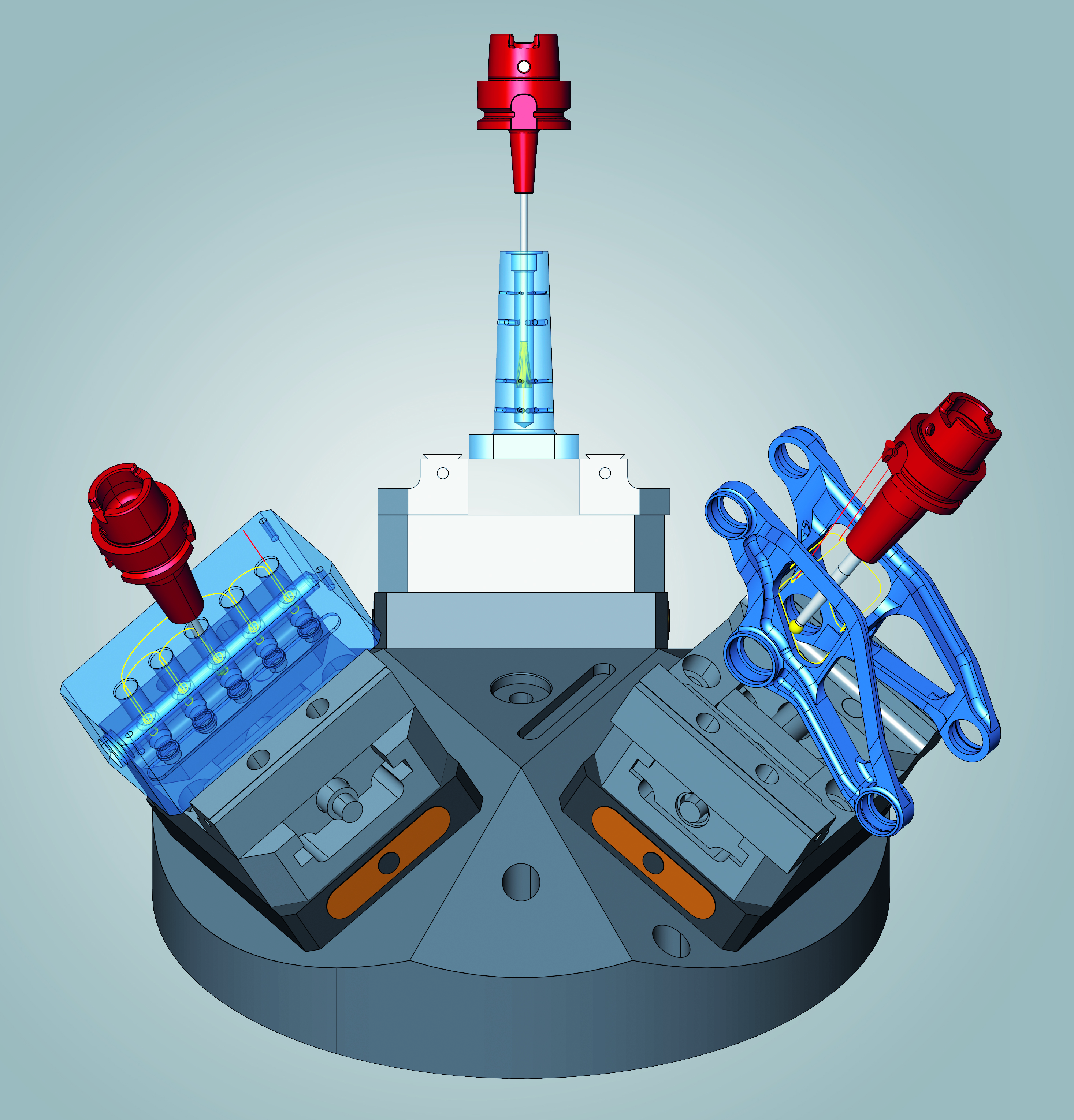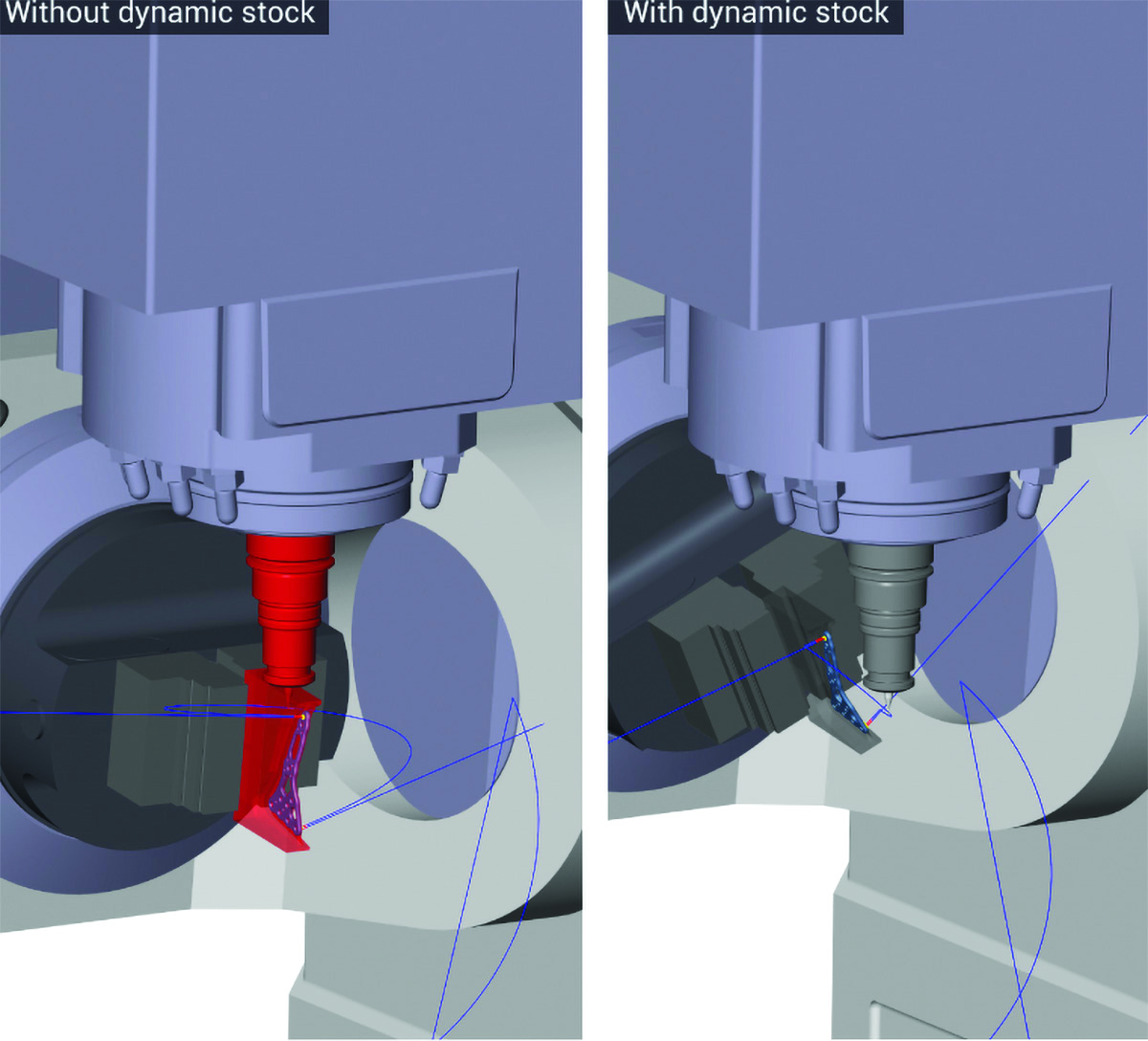
Open Mind Technologies has released a range of enhanced features and innovative technology in its hyperMILL 2025 CAD/CAM Software Suite. Highly productive programming and machining strategies in hyperMILL enable accurate, efficient 2.5D, 3D, precision 5-axis and mill/turn machining.
The innovative 5-axis automatic tool orientation mode in hyperMILL 2025 ensures optimized machining, enabling efficient and reliable tool paths on the most complex components. The 5-axis automatic tool orientation mode algorithm uses a pre-analysis of the entire tool path to calculate machining sequences of simultaneous and indexed tool movements, reducing the number of inputs required for 5-axis machining and saving time when programming challenging parts.
A 5-axis hole deburring strategy excels at deburring sharp edges on holes and intersecting holes, the company says. By using CAM Plan programming assistance and analysis technology to automatically recognize all the holes, the sharp edges in the model are marked for selecting the desired edges. The hole deburring technology automatically calculates tool paths and supports 3-axis and 5-axis modes. Also, hyperMILL now offers a 5-axis deburring strategy for fast and efficient deburring of component edges. Users may choose between 3-axis machining and a 5-axis option which enables greater reach to more component edges, automatically generating the required inclinations as well as collision avoidance.

The pocket milling algorithm for high feed cutters in hyperMILL 2025 has been redeveloped for 3D-optimized roughing, achieving greater efficiency during roughing as well as better machining control, especially helpful when machining large lateral in-feeds and remaining material. Contour and path radii can also be defined, resulting in improved toolpath rounding.
Linking movements via hyperMILL VIRTUAL Machining Optimizer have been further optimized for actual stock conditions with new Dynamic Stock technology. Using Dynamic Stock, an updated stock is automatically generated for all machining jobs and accounted for when calculating linking movements.
In addition, hyperMILL 2025 includes new technology such as a revised 5-axis Profile Milling cycle, a totally new 5-axis ISO Machining cycle, enhancements to turning postprocessors for main/ sub spindle applications on Siemens, Fanuc, and Mitsubishi (Mazak) controls, and more.
For more information about hyperMILL 2025, click here.
Contact Details
Related Glossary Terms
- computer-aided manufacturing ( CAM)
computer-aided manufacturing ( CAM)
Use of computers to control machining and manufacturing processes.
- feed
feed
Rate of change of position of the tool as a whole, relative to the workpiece while cutting.
- gang cutting ( milling)
gang cutting ( milling)
Machining with several cutters mounted on a single arbor, generally for simultaneous cutting.
- milling
milling
Machining operation in which metal or other material is removed by applying power to a rotating cutter. In vertical milling, the cutting tool is mounted vertically on the spindle. In horizontal milling, the cutting tool is mounted horizontally, either directly on the spindle or on an arbor. Horizontal milling is further broken down into conventional milling, where the cutter rotates opposite the direction of feed, or “up” into the workpiece; and climb milling, where the cutter rotates in the direction of feed, or “down” into the workpiece. Milling operations include plane or surface milling, endmilling, facemilling, angle milling, form milling and profiling.
- toolpath( cutter path)
toolpath( cutter path)
2-D or 3-D path generated by program code or a CAM system and followed by tool when machining a part.
- turning
turning
Workpiece is held in a chuck, mounted on a face plate or secured between centers and rotated while a cutting tool, normally a single-point tool, is fed into it along its periphery or across its end or face. Takes the form of straight turning (cutting along the periphery of the workpiece); taper turning (creating a taper); step turning (turning different-size diameters on the same work); chamfering (beveling an edge or shoulder); facing (cutting on an end); turning threads (usually external but can be internal); roughing (high-volume metal removal); and finishing (final light cuts). Performed on lathes, turning centers, chucking machines, automatic screw machines and similar machines.

